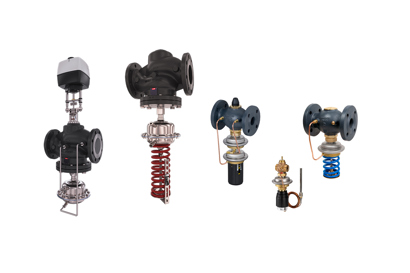The Saleska Valley district heating network is the second largest network in Slovenia, covering two major cities and industrial estates through 400 km of distribution pipelines. The network dates back to 1959, and since then demands have changed significantly. These changes challenge the hydronic balancing of the system.
The system has to cope with great variations in the operating conditions. The winter in Slovenia is cold and the heating demand is high, whereas the summer is hot with no need for heating, only domestic hot water supplies. The network also supplies several large industrial estates with fluctuating demands; and besides, the district heating system has been prone to major outages, leaving consumers with no heating or hot water for hours.
As is the case in many, older systems, the poor hydronic balancing results in inefficient heat utilization on the secondary side, while oversized control equipment tend to increase the return temperature. The low temperature difference leads to increased pumping cost, substantial heat losses and increased energy consumption. This again leads to excessive CO2 emissions, high operational costs and poor user satisfaction.
“We were facing serious challenges and sought a solution that would improve the hydronic balance of the system and thereby ensure steady and sufficient supplies to the two main pipelines that supply the valley’s major cities of Velenje and Sostanj.” Rok Miklavzina, Senior Distribution Engineer.

Poor hydronic balancing solved with new pressure and flow controllers
Related products
-
if (isSmallPicture) {


 Differential pressure, flow and temperature controllers
Differential pressure, flow and temperature controllersBalance your network, save energy and improve end-user comfort by hydronic balancing and control of district energy networks. Optimal hydronic balance and perfect temperature control are the key to maximizing the efficiency of heating or cooling networks.
-
if (isSmallPicture) {


 Virtus | Heavy-duty Pressure and Flow Controllers
Virtus | Heavy-duty Pressure and Flow ControllersA new generation of Virtus intelligent ready pressure and flow controllers are here to ensure high durability, improved functionality and performance in district energy networks balancing. In addition, unique intelligent optimization functions iNET and iSET will save even more energy.








